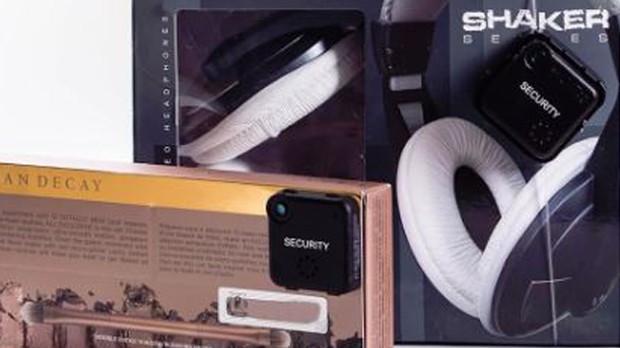Today’s shoplifters are becoming more brazen than in the past, according to a recent survey by the National Retail Federation. This disturbing trend is putting enormous pressure on retailers that want to both prevent loss and keep associates safe. Additionally, some of the industry’s most enduring loss prevention strategies have now been rendered less effective.
 “Shoplifters are bolder and not afraid of setting off alarms at the door,” explained Robb Northrup at siffron, which manufactures retail merchandising fixtures and displays. “They know that if they can get to the exit, they are as good as gone.”
“Shoplifters are bolder and not afraid of setting off alarms at the door,” explained Robb Northrup at siffron, which manufactures retail merchandising fixtures and displays. “They know that if they can get to the exit, they are as good as gone.”
Because trying to stop theft at the store’s door places employees at substantial risk of harm, retailers have largely resigned themselves to watching thieves—and their merchandise—run off. This feeling of powerlessness is reflected in the results of the 2019 National Retail Security Survey, which found that the average retailer made six times fewer shoplifting stops last year than in 2015. There has not been the same decline in losses from shoplifting, of course.
This problem has left stores searching for answers. “We’ve seen several retailers moving back to locking product away in high-theft stores to stop the flow of merchandise being stolen from those locations,” said Northrup. “But that isn’t progress.”
According to Northrup, while locking away product may cut certain types of shrink, it also cuts into profit—up to 80 percent for some product categories. Limiting access to high-theft products discourages legitimate customers from accessing merchandise, driving lost sales, and frustrating customers.
Understanding customers’ pain points and knowing current trends in store theft, siffron has been moving loss prevention away from the exit door and back into the store. siffron’s LM Tag™ combines a light sensor and a motion detector and alerts store personnel when the product is both in motion and concealed in a bag, under a coat, or in a pocket. Store personnel are directed to the point of concern inside the store, rather than after merchandise has been carried into the parking lot.
siffron’s SONR loss prevention line alerts store staff of shoplifting at the point of theft. SONR includes a battery-operated hook with an anti-sweep design and an echo box that emits an “activity beep” each time the integrated label is lifted to remove items, one by one. Instead of notification at the door, the solution creates awareness of activity while there is still time—time for staff to address a potential offender safely with standard service practices and time for a potential shoplifter to feel pressure to change his or her mind.
“The idea is to simplify the process and initiate notifications at the display level,” explained Northrup. “While offenders are more prone to dash once they reach the doors with existing solutions, they still are generally risk-averse. When attention is drawn to them at the display level inside the store, even with something as simple as a beep upon product removal like we have with the SONR system, offenders are more likely to leave that merchandise alone as attention is drawn to them and their activity.”
But does it work? Northrup acknowledged that some LP practitioners are not immediately convinced that using audible cues can be an effective theft deterrent. However, the idea that environmental cues can be used to influence behavior is well documented.
Research studies illustrate how subtle cues can push people toward honest behavior. In a ten-week study by the Evolution and Behavior Research Group (University of Newcastle), employees paid for cafeteria drinks on the honor system while a poster of a person’s eyes hung on a nearby wall; for an additional ten weeks, they paid for drinks under a poster of flowers. Astonishingly, people paid 2.8 times as much money for similar products when the poster of a person’s eyes watched over them, showing how subtle cues of authoritative observation can prevent adverse behavior. Studies of music and other auditory cues have similarly demonstrated a significant ability to influence moral decision-making and deter people from unethical and counterproductive behaviors.
Many LP retailers are drawn to the simplicity of siffron’s effective approach. Northrup noted that some solutions in the market have gotten highly complicated, cumbersome, and difficult to use – such as requiring external power sources, specialized installation hardware, and complex wiring and electrical cables running through fixtures. Wireless and easy to install, siffron’s loss prevention solutions not only deter criminals, but they also adhere to today’s demanding business needs.
“Retailers need solutions that are as plug-and-play as possible,” he explained. “With the ever-changing retail environment, retailers need to be nimble in their display approach and able to adjust their planograms on the fly as much as possible.” LP teams also need to target problem areas or SKUs, while some high-cost security solutions and equipment cannot differentiate between low- and high-value SKUs.
Ultimately, LP professionals are convinced when they see concrete results from this new approach to security, said Northrup. “It’s when they see their shrink numbers decrease, sales increase and the ROI proves itself out in months, not years.”








